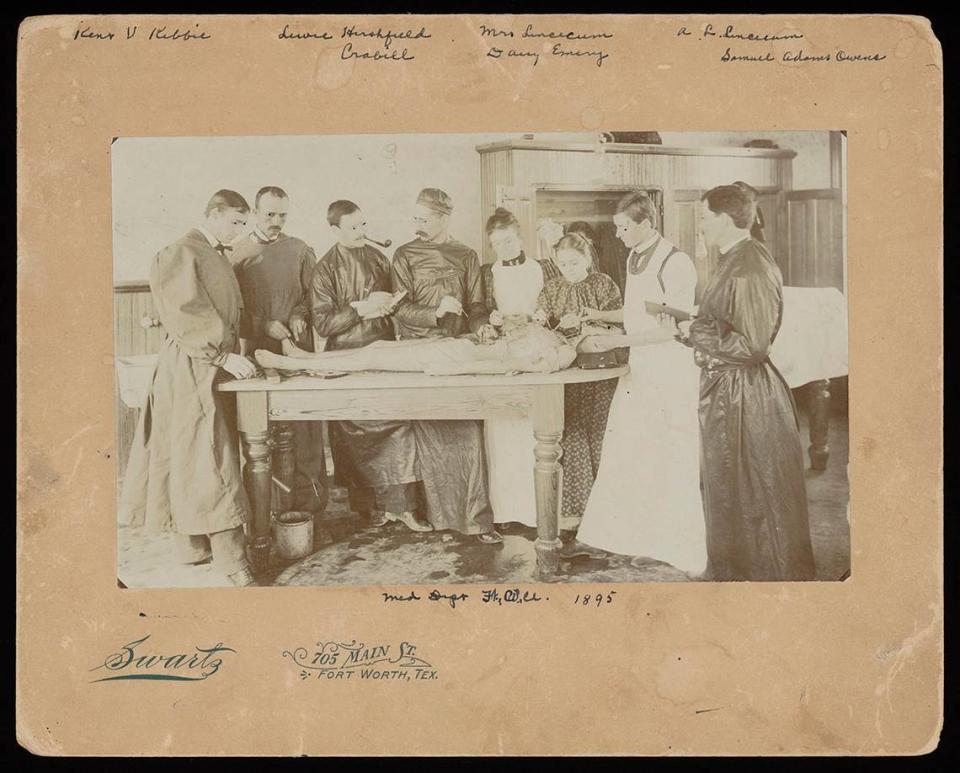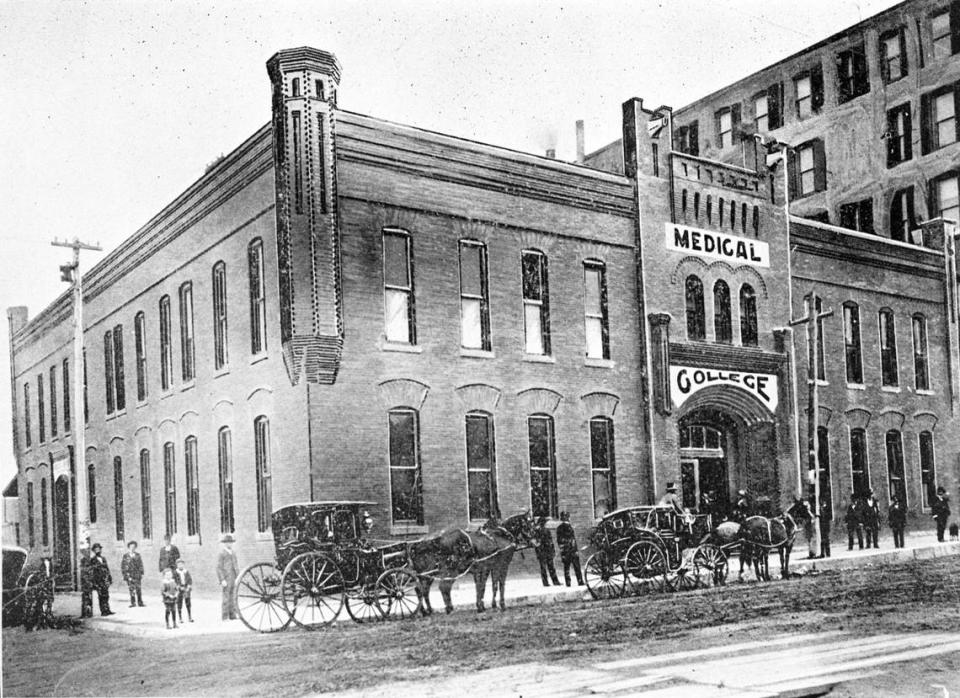TCU’s first attempt at a medical school wasn’t as successful as today’s Burnett school
Texas Christian University’s Burnett School of Medicine wasn’t the university’s first attempt at a medical school. In June 1911 - shortly after TCU moved to Fort Worth from Waco - press announcements trumpeted the news that the university would take over the 17-year-old Fort Worth Medical College.
Medical education in Fort Worth had originally been established under the auspices of Fort Worth University in October 1894, with grand plans for teaching both medicine and pharmacy. It was hoped that many of the new graduates would stay in Fort Worth to practice medicine.
One of the students in the first class was Daisy Emery, who became something of a local legend. She had a childhood desire to be a doctor and followed through by enrolling in the first classes offered at the medical school. Emery graduated cum laude in 1897. Her first job was as a physician working in a women’s and children’s clinic.
Emery married a fellow physician, James W. Allen, in 1904, and they practiced in several small towns in the region. He died in 1913, and she moved back to Fort Worth, where she continued to practice and teach medicine until she retired in 1950.
The 1895 extremely rare photograph of the future Dr. Emery in an autopsy lab is a stark reminder of the type of work required of medical students. That the medical department of Fort Worth University had at least two female students in 1895 is a testament to the school’s efforts to survive, rather than that it openly welcomed women.

By 1895, the medical college had 100 students and was looking for separate downtown quarters, away from the main university. It first took over an office building at Seventh and Commerce (then Rusk) that had been used as a temporary courthouse while the current Tarrant County Courthouse was built. That building (it later became the Seibold Hotel) had to be adapted for a medical curriculum.
Seventeen Fort Worth physicians, who also served as the school’s faculty, continued the effort to construct a new facility that would also include 50 hospital beds for indigent patients.

The new building, at the corner of Fifth and Calhoun, did not open until 1906. It measured 90 feet by 90 feet and, according to the Star-Telegram, was a three-story building that was, “nearly altogether a four story structure” because of the raised basement. It was also conveniently located next to “older residential quarters, where boarding and lodging for students may be had at a moderate cost.”
The building cost $65,000 and contained the hospital beds; a clinic where free treatment was provided; an assembly hall which seated 300; physiological, histological, and pathological laboratories; an anatomy laboratory; a surgical amphitheater; and a pharmacy laboratory.
Even with the shiny new building, the medical school had trouble staying afloat. The 1911 merger with TCU was not a full financial merger, and the small school’s monetary problems continued. It didn’t help that right before the merger the medical school’s registrar defrauded the institution of over $10,000. This was at a time when medical tuition was $50 a semester.
Changing standards for medical schools were also a problem. A 1910 study by Abraham Flexner outlined the essential elements that a modern medical education should include. Without adequate funding, it was difficult for many smaller schools to meet these standards.
In 1918, the medical school affiliated with TCU closed and transferred its records and students to Baylor in Dallas. It would be over 100 years before another student studied in Fort Worth for a Doctor of Medicine degree. Note: For the rich history of osteopathic medicine in Fort Worth over the past 50-plus years, read my 2020 column on the origins of the University of North Texas Health Science Center.
Carol Roark is an archivist, historian, and author with a special interest in architectural and photographic history who has written several books on Fort Worth history.

